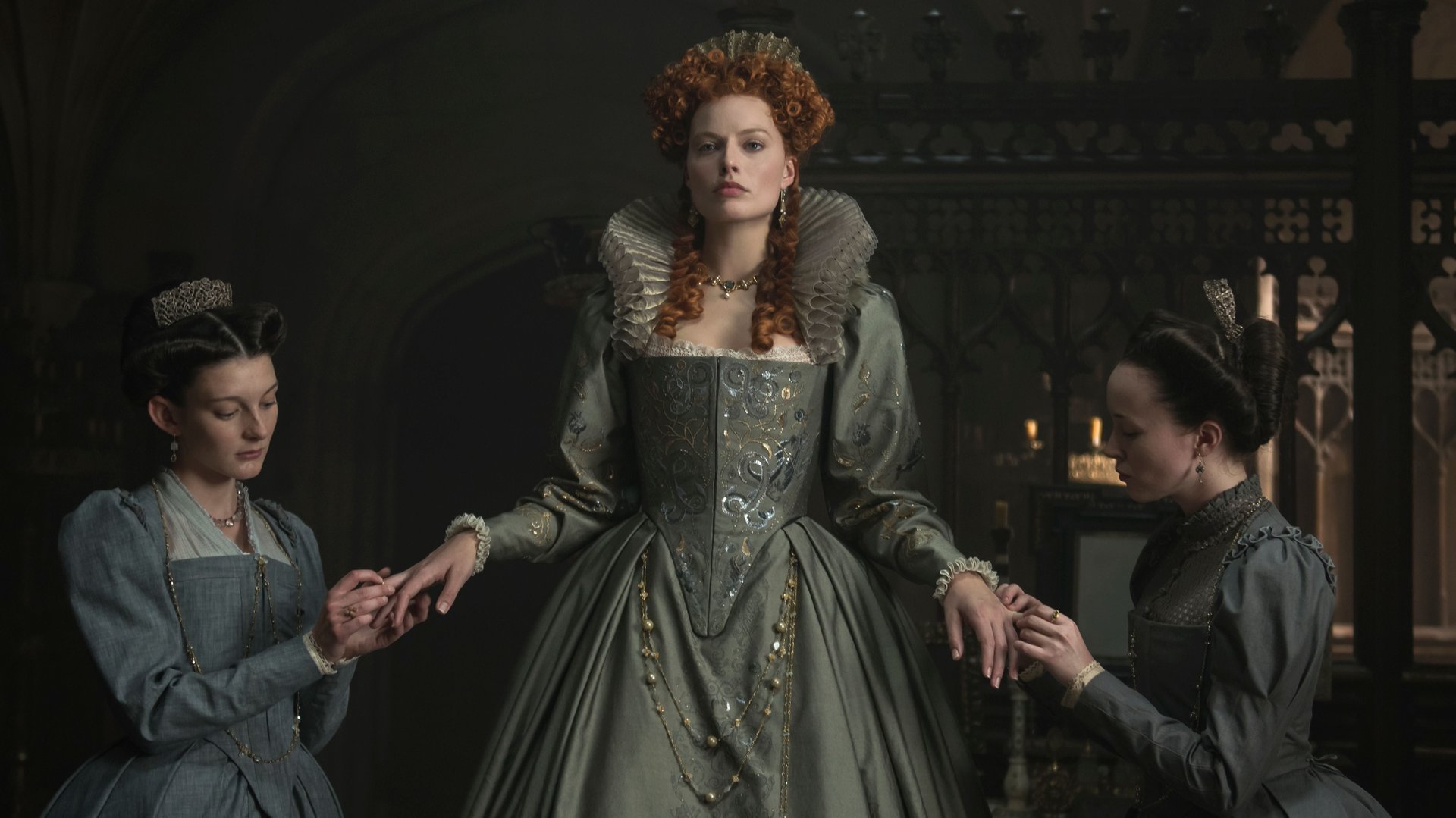The pivotal portrait exchange in “Mary Queen of Scots” is the Instagram of the Elizabethan Era
This story contains spoilers for “Mary Queen of Scots.”


This story contains spoilers for “Mary Queen of Scots.”
In Mary Queen of Scots, Mary Stuart only ever meets her cousin, Elizabeth I, once. Production notes reveal that the actresses playing the roles—Saoirse Ronan and Margot Robbie, respectively—never saw each other in full costume until filming that one moment. (There is no evidence in the historical record that the queens ever met in real life.)
The film portrays Mary and Elizabeth as almost obsessed with each other’s faces and activities. Their interest in each other is expected, considering there is a kingdom and its dynasty at stake, and the film centers around Mary’s fight for the English throne, which eventually ends in her execution. However, their fixation with one another also feels relevant now, even if it was originally set during a 16th-century monarchical dispute.
In the film, the first correspondence between the queens involves a portrait exchange, and it is these first images that kickstarts their preoccupation with what the other is like, and how they themselves are perceived. Some reviews have said that the film’s attempts to resonate with modern audiences, whether that’s championing female power or diversity, fall short. But the portrait exchange feels on key. Trying to influence someone’s impression of you through a carefully curated lens—each queen supervised the painting of her own portrait—is something people do on social media every day, sometimes at the expense of their own well-being.
A portrait exchange that ends in a beheading is not quite the same as Instagram posts that can incite unhealthy envy over an “influencer’s” life. But by highlighting how carefully Mary and Elizabeth both send and receive their portraits, the film does capture the process of presenting yourself to the world, and dealing with how the world accepts the real you.
The movie shows this gap between perception and reality for both the queens. When Elizabeth first looks at the portrait Mary has sent her, she remarks that she can see a “young” and “clever” woman—a threat to the throne, her reaction implies. Throughout the film, Mary’s youth and cunning antagonizes Elizabeth, who is constantly reprimanded for not marrying and getting too old to have children. Mary, on the other hand, entered a strategic marriage and gave birth to a son. After Elizabeth learns this news, it is clear by her regular allusions to Mary’s youth, beauty, and fertility that the portrait is present in her mind. But by the time they meet, Elizabeth realizes that Mary’s youth, rash decisions, and even her motherhood became her downfall, and she says so to Mary’s face.
On the other hand, when Mary first receives Elizabeth’s portrait, she wonders out loud how close the resemblance really is. At the time it is sent, the image is beautiful and accurate, but many years and a bout of disfiguring smallpox later, Elizabeth looks very different when she finally meets Mary. At first, she tries to cover up her scars using heavy makeup and a red wig (as Slate put it, she looks like Ronald McDonald), and tells Mary that she wanted to present her best self. But after a heated confrontation, Elizabeth removes her wig and reveals the borders of her makeup, and how much hair she has lost, and tells Mary that she doesn’t care how she is seen anymore.
Almost all the time, it is the men around the queens—nobles, advisors, priests—that try and control their narrative. The portraits and the face-to-face meeting are the only times that Mary and Elizabeth have full control of their image. Even if these instances show just how different people can be, or how much they can change, compared to the first picture that they present of themselves, those scenes are also the moments when the women hold the most agency—and that’s worth noticing.